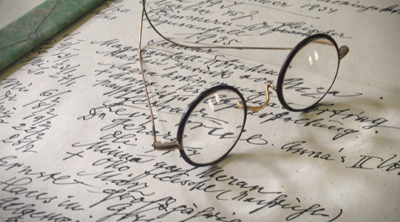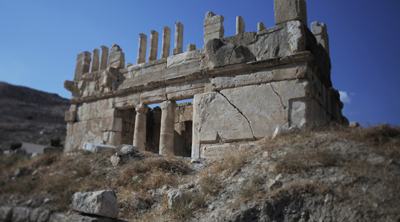The Jewish Diaspora in New York
In this clip from The Story of the Jews, Simon Schama travels to New York City, considered THE iconic landing place in the Jewish-American story.
Uptown, Temple Emanu-El on 5th Avenue became the headquarters of American Reform Judaism, catering to rows of progressive, wealthy and successful worshippers. This is where many of those American Jewish names you might have heard of – the Wall Street bankers and industrialists like the Schiffs, the Warburgs and the Guggenheims – could sit together with their wives in their fancy hats from Bergdorf’s, Macy’s and Bloomingdale’s – their fellow congregants’ stores. Here was the promise of Jews out in the world becoming something, astonishingly realized in glass and stone.
Of the two and a half million Jews docking on American shores between the 1880s and 1920s, more than 60% of them began their new lives on the streets of the Lower East Side, cramming to shabby, overcrowded tenement buildings along with immigrants from all over Europe. Lower East Side Jews were deeply different from the Uptown Jews of Temple Emanu-el — proletarian, drenched in old world superstition or radical politics and far from wealthy. For many of these Yiddish-speaking newcomers, the new world was a just high-rise version of the old one, complete with pushcart peddlers and the street corner revolutionaries.
In the shove and jostle of ghetto life, the traditional authority of the Rabbi was usurped by the institutions of democratic America -– in particular, the socialist newspaper, the Daily Forward, and the Jarmulowsky Bank. The towering buildings erected to house these businesses were described as the two handles of the Torah scroll, holding the community up. By the standards of 1912, these buildings were skyscrapers, built on the same street in the same year by two immigrants from the Pale.
On one side was Abraham Cahan, a revolutionary socialist from Lithuania, who turned the Forward into the most widely read Jewish newspaper in America. He fought the battles of the poor in print, and initiated them into the novelties of American life, like baseball and voting.
On the other was Sender Jarmulowsky, a new world banker, always a good Torah Jew. Not only did he encourage Jews to save in order to get themselves out of the Lower East Side, he also provided reliable shipping tickets to those they’d left behind in the nightmare of the pogroms.
…and just to make sure his building was taller than Cahan’s, Jarmulowsky added a 12 meter cupola to his roof. Quite an American story.
In this clip from The Story of the Jews, Simon Schama travels to New York City, considered THE iconic landing place in the Jewish-American story.
Uptown, Temple Emanu-El on 5th Avenue became the headquarters of American Reform Judaism, catering to rows of progressive, wealthy and successful worshippers. This is where many of those American Jewish names you might have heard of – the Wall Street bankers and industrialists like the Schiffs, the Warburgs and the Guggenheims – could sit together with their wives in their fancy hats from Bergdorf’s, Macy’s and Bloomingdale’s – their fellow congregants’ stores. Here was the promise of Jews out in the world becoming something, astonishingly realized in glass and stone.
Of the two and a half million Jews docking on American shores between the 1880s and 1920s, more than 60% of them began their new lives on the streets of the Lower East Side, cramming to shabby, overcrowded tenement buildings along with immigrants from all over Europe. Lower East Side Jews were deeply different from the Uptown Jews of Temple Emanu-el — proletarian, drenched in old world superstition or radical politics and far from wealthy. For many of these Yiddish-speaking newcomers, the new world was a just high-rise version of the old one, complete with pushcart peddlers and the street corner revolutionaries.
In the shove and jostle of ghetto life, the traditional authority of the Rabbi was usurped by the institutions of democratic America -– in particular, the socialist newspaper, the Daily Forward, and the Jarmulowsky Bank. The towering buildings erected to house these businesses were described as the two handles of the Torah scroll, holding the community up. By the standards of 1912, these buildings were skyscrapers, built on the same street in the same year by two immigrants from the Pale.
On one side was Abraham Cahan, a revolutionary socialist from Lithuania, who turned the Forward into the most widely read Jewish newspaper in America. He fought the battles of the poor in print, and initiated them into the novelties of American life, like baseball and voting.
On the other was Sender Jarmulowsky, a new world banker, always a good Torah Jew. Not only did he encourage Jews to save in order to get themselves out of the Lower East Side, he also provided reliable shipping tickets to those they’d left behind in the nightmare of the pogroms.
…and just to make sure his building was taller than Cahan’s, Jarmulowsky added a 12 meter cupola to his roof. Quite an American story.
Find educational resources related to this program - and access to thousands of curriculum-targeted digital resources for the classroom at PBS LearningMedia.
Visit PBS Learning Media


